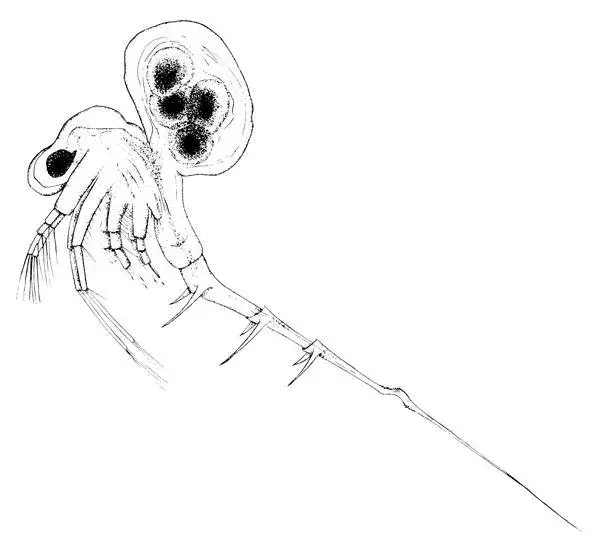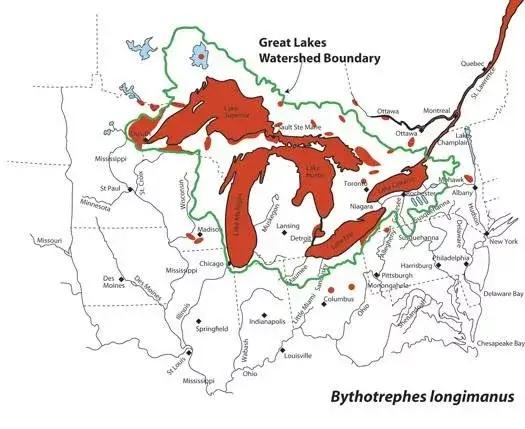
This predatory cladoceran zooplanktor, commonly known as the spiny waterflea (Bythotrephes longimanus; formerly identified as Bythotrephes cederstroemi), is a crustacean, a relative of crayfish and shrimp. A native of the Ponto-Caspian region of Eastern Europe and Western Asia, Bythotrephes was first found in North America in December 1984 in Lake Huron. Spread through the Great Lakes was rapid, with the species being found in Lake Ontario in September 1985, Lake Erie in October 1985, Lake Michigan in September 1986, and Lake Superior in August 1987.This species is believed to be an international shipping ballast water introduction. Its rapid spread throughout the lakes most likely is the result of currents, inter- and intra-lake ballast transfers, and recreational boating on the lakes.



Bythotrephes is planktivorous, consuming up to 20 prey zooplanktors per day. One major target species of Bythotrephes is Daphnia (another small water flea). Research has shown that a dramatic decrease in Daphnia abundance coincided with the introduction of Bythotrephes in Lake Michigan. Density of a native predatory zooplanktor, Leptodora, also dropped off coincident with the appearance of Bythotrephes, possibly because Bythotrephes was outcompeting it for Daphnia. It has been theorized that declines in the abundance of Daphnia and other Bythotrephes prey may alter the food web in the Great Lakes, reducing the number of young plankton-eating fish which survive their first year. Researchers have observed that chinook salmon, walleye, white bass, alewife, yellow and white perch, emerald and spottail shiner, and lake whitefish consume Bythotrephes. It is not known, however, how nutritional this water flea is for fish, given the amount of its mass made up by exoskeleton and the long tail spine. It is too soon to know the ultimate impact of Bythotrephes on Great Lakes ecosystems. If the water flea is found to be a preferred (and nutritious) food source for perch and other fishes, its impact on fish populations may be beneficial. If predation by Bythotrephes results in reduced populations of preferred prey, such as Daphnia, the water flea may result in negative consequences to native Great Lakes fish populations. Is has been theorized that the decline of alewife in Lakes Ontario, Erie, Huron, and Michigan may be related to the introduction of Bythotrephes.
This map shows confirmed observations (green points) submitted to the NYS Invasive Species Database. Absence of data does not necessarily mean absence of the species at that site, but that it has not been reported there. For more information, please visit iMapInvasives.